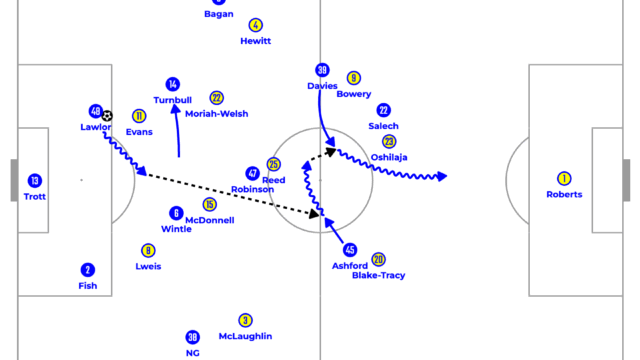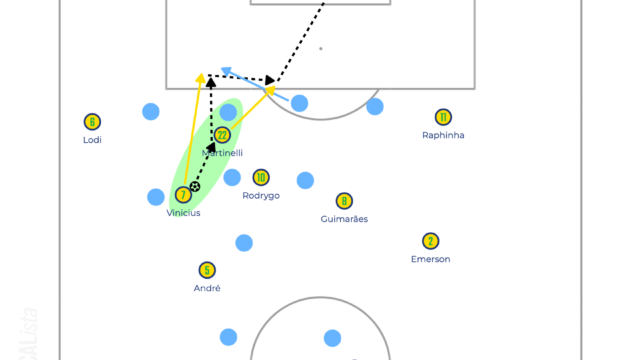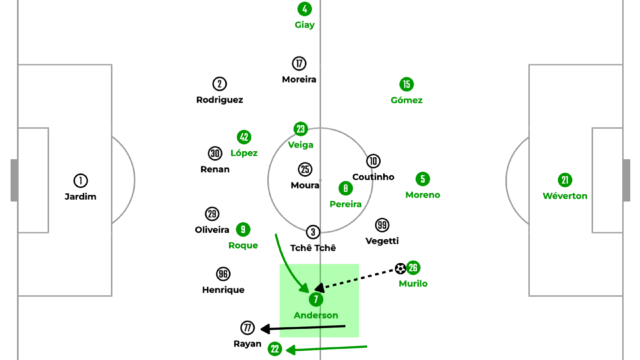FC Bayern München Tactical Analysis 22-23 [Thomas Tuchel’s New Era Has Just Begun]
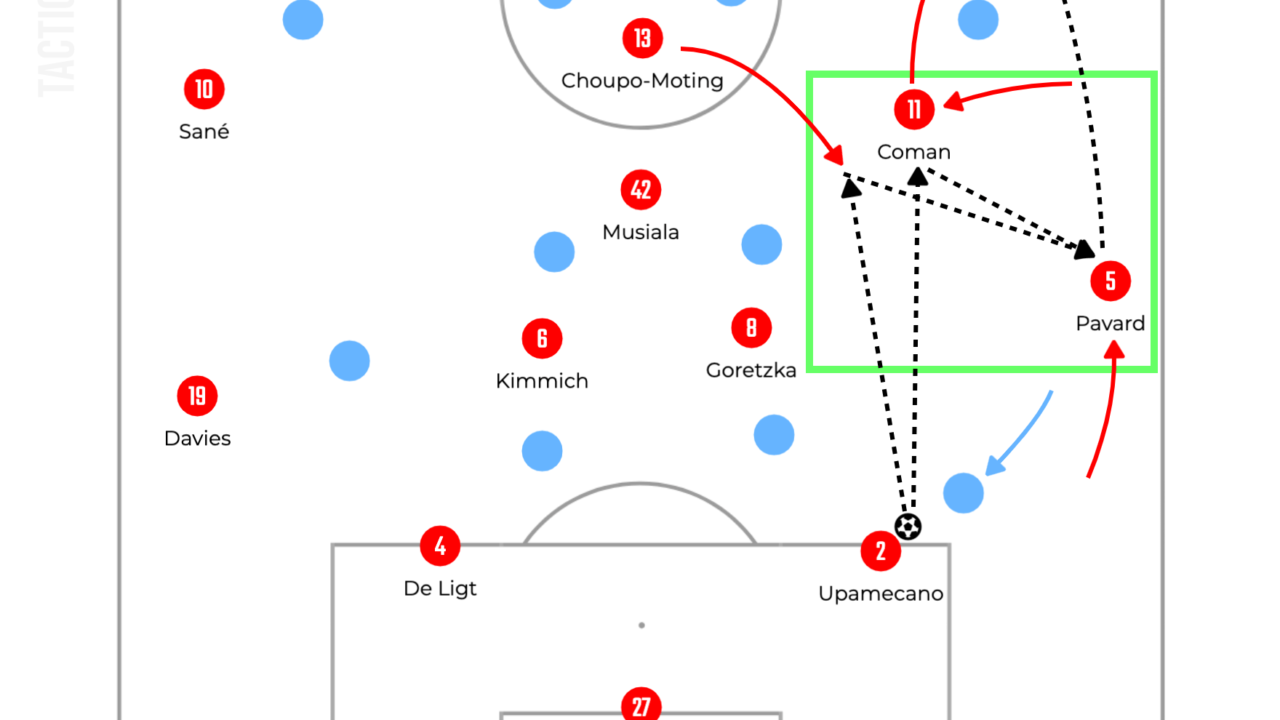
Introduction
Julian Nagelsmann was surprisingly sacked with still having the hope to win the treble and Thomas Tuchel was appointed to the new manager of Bayern München. From Nagelsmann to Tuchel, there were some differences of the system, philosophy or playing style. It has to be noted that Tuchel has not been given so much time to prepare and train players with playing games twice a week, but he has shown his ability to organise players quickly. In this article, the differences between Nagelsmann and Tuchel are going to be analysed.
Here’s the article about Nagelsmann’s Bayern München.
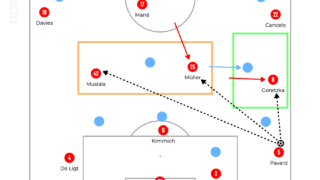
From Back 3 to Back 4
The first change was the system. These days, it was proposed that the system should vary throughout the game depending on the situation of the game or the opposition shape. However, it is also impossible to ignore where players are positioned because the original position must be considered if looking at rotations or combinations.
The biggest difference is the number of players at the back. Under Nagelsmann, the shape was mainly back three, but it was changed into the back four by Tuchel. Nagelsmann’s back three was flexible and especially when defending, it sometimes turned into back four. The left wingback Alphonso Davies often plays as a fullback when the team is playing in a back four while the right wingback Kingsley Coman is a naturally winger. This asymmetric selection of players made it possible to be flexible between the back three and four. However, in possession, Nagelsmann’s side usually played with a back three and could be described as a 3-1-5-1. On the other hand, under Tuchel, he prefers to play with a back four and the system can be regarded as a 4-2-3-1 or 4-1-2-3 depending on the position of Leon Goretzka in the midfield.
In the next chapter, the differences between those systems will be discussed further.
From Central Attacking to Wide Attacking
Let’s talk about the tactics in possession. Nagelsmann loved to attack the middle with an overload. In the 3-1-5-1, there is only a wingback in each side while there are four attackers in between lines. Having four attackers in between the lines means they can create an overload against even three centre backs in the middle. Additionally, the close distances between each attacker made it possible to combine and link up in between lines.

On the other hand, in Tuchel’s back four system, it was completely changed. In his system, a 4-2-3-1 or 4-1-2-3 depending on the position of Goretzka, there are two players in each side and only two or three attackers are in the middle. When Goretzka positions himself in the pocket and the system is a 4-1-2-3, both fullbacks can tuck in and support Joshua Kimmich while when Goretzka stays deeper, wingers come inside to fill the pocket in between the lines. However, as there is naturally an overload in wide areas, Tuchel’s side prefers to play wide, and wingers are the key when attacking.

In this system, which side Coman and Leroy Sané are playing is massively important and reflects Tuchel’s plan. If it is expected that the opposition team will defend with a compact block from the midfield to their box, right-footed Coman is selected to play in the left side and left-footed Sané will play in the right side. This enables them to dribble inside and fullbacks to overlap to create 2v1.

On the other hand, if the side was opposite, their attacks become more directly. This is because the wingers can run in behind to receive the long ball and deliver a first time cross easily. This worked extremely well against Man City in the second leg of the quarter final in the Champions League, so it will be analysed further in the next chapter.
Another possible advantage of changing into the back four is managing counterattacks. During Nagelsmann’s era, the high line with the back three was one of the biggest features. However, there was a risk of exposing huge space in behind and actually they conceded some goals from counterattacks. With the back four system, there are one more defender at the back and it can help their resistance to the opposition counterattacks.
Impressive Second Leg against Man City
In the situation where they were 3-0 down, Bayern began the game extremely well against Man City at Allianz Arena. As they suffered from City’s pressing in the second half in the first leg, Tuchel has found the solution and it worked brilliantly except for having missed huge chances. Against City’s pressing which a winger will press a centre back from outside, Bayern tried to exploit the wide area behind the winger and play fast attacks with Coman on the right and Sané on the left.

As City’s winger, Jack Grealish presses to Dayot Upamecano, his only option is playing through. In the first leg, they could hardly find a spare player in between the lines. However, in the second leg, Coman and Eric Maxim Choupo-Moting dropped into the pocket to receive the split pass and Benjamin Pavard moved higher to create a 2v1 in the right wide. Then, Coman made a sprint in behind, it was simple but worked effectively. Unfortunately, missing huge chances such as Sané’s 1v1 made the game difficult, but tactically in the first half Bayern was superb, considering the fact that Tuchel had not been given enough time.
If Bayern is not Chelsea and gives him time, in the next season, Tuchel’s Bayern can be one of the organised teams in Europe. It is the matter of time. If you would like to know Bayern’s tactics, I recommend you read this article below. I hope you enjoy it.

